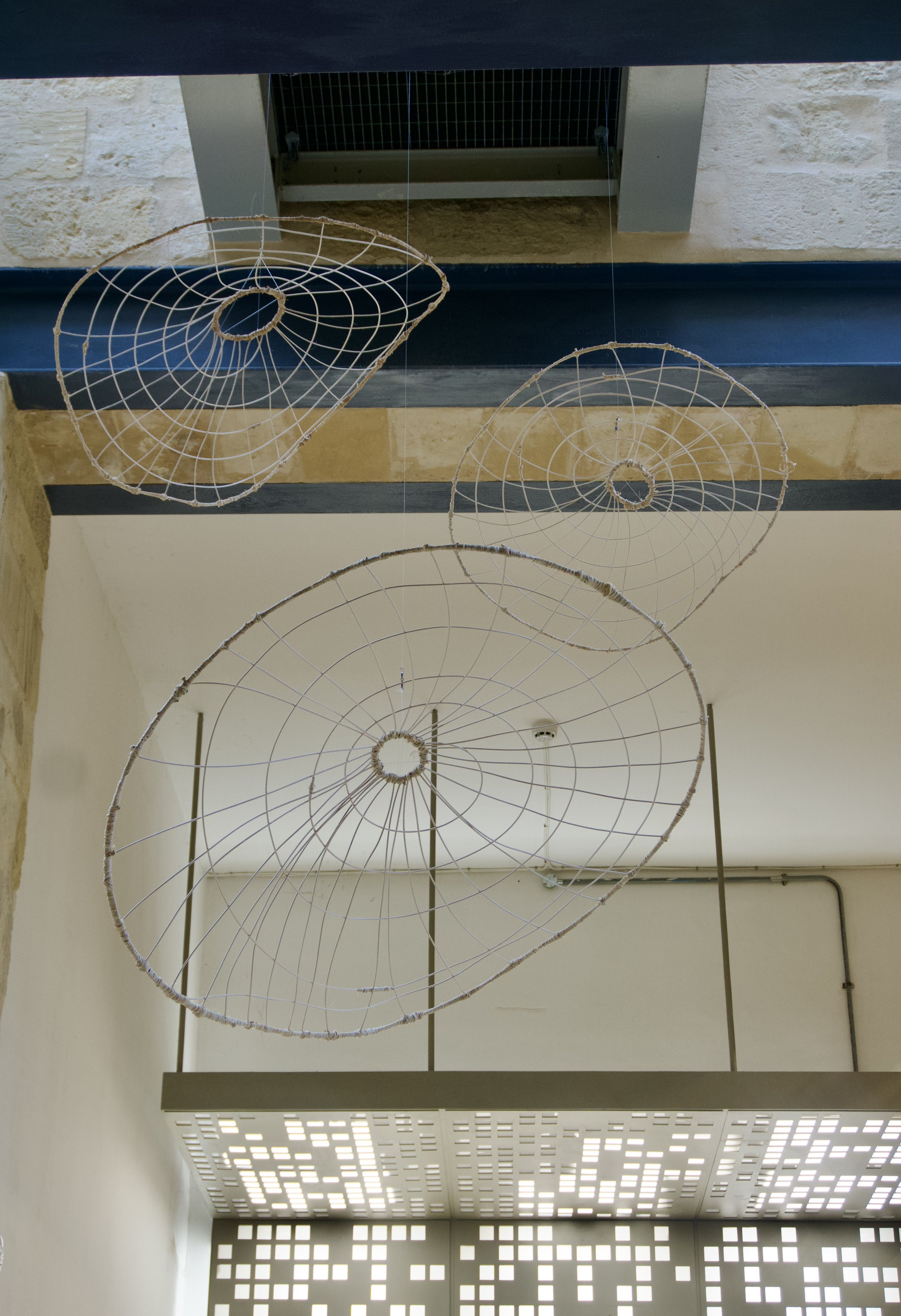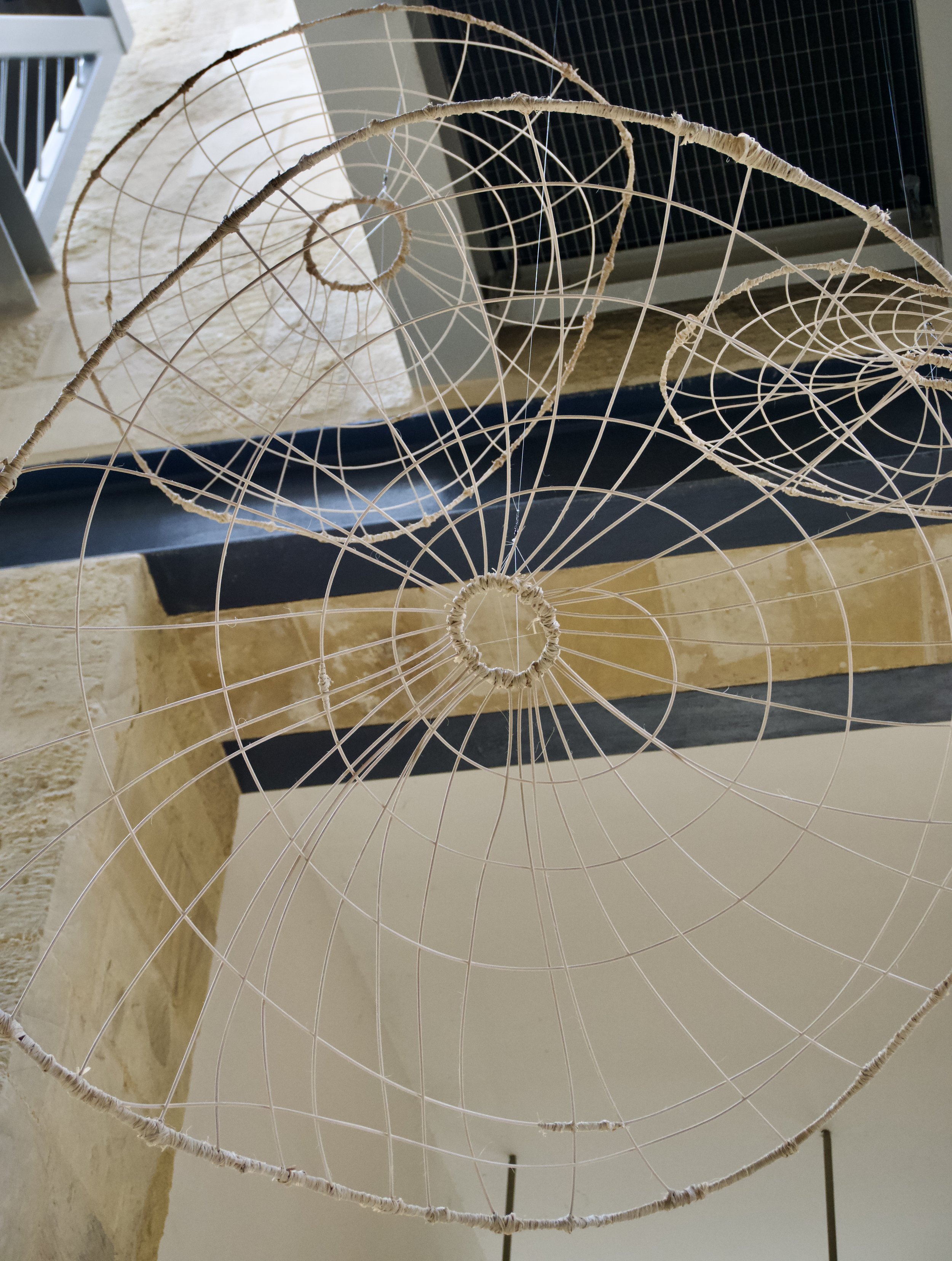Patricia Abela is a multidisciplinary artist based in the Blue Mountains, a World Heritage National Park.
INSTALLATIONS
BEGUILED
TO HELP TIME PASS BY PLEASANTLY
Materials: Cane and Raffia
An organic and ephemeral installation made of natural materials that captures a space in time. This installation is a symbol of the challenges we face during our life journey. It aims to enthral, mesmerise and captivate as an assemblage gently rotating with the natural flow of air.
Artist Patricia Abela facilitated workshops for participants of the Malta Society of the Blind to build the artwork during her artist in residency at the Valletta Design Cluster in October 2023.
Participants were able to share life experiences and were uplifted as they participated in these unique workshops.
‘Art is the highest form of hope’- a quote by German painter Gerhard Richter
This project is part of the Spazju Kreattiv - Artists’ Residency Programme, in collaboration with the Valletta Design Cluster, Valletta Cultural Agency and the Ministry for Gozo.
The artist wishes to also acknowledge the support of the Rotary Club of Blackheath, New South Wales, Australia, and private Australian sponsors for their support of this project.






